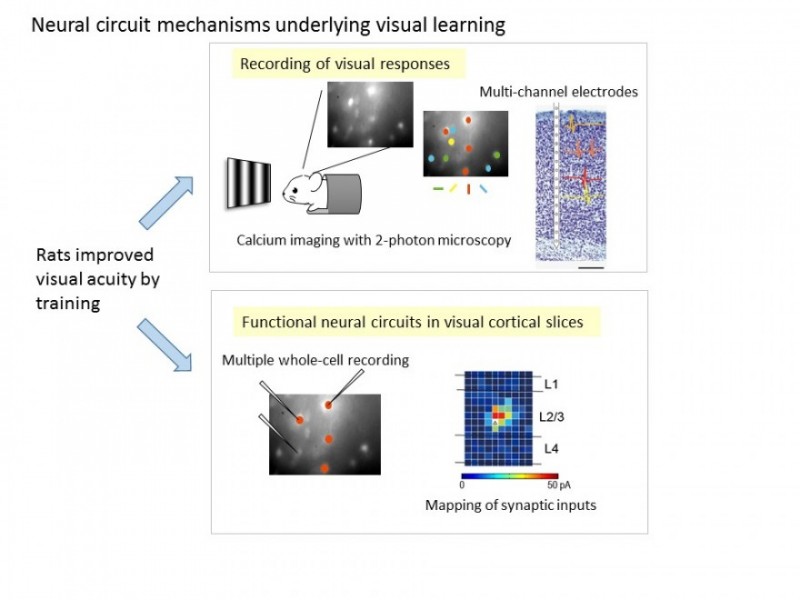Yumiko Yoshimura (National Institutes of Natural Sciences)

“Neural circuit mechanisms underlying visual learning”
Sensory function may be modified depending on experience. We previously demonstrated that when rats were trained by the visual stimulation with a particular orientation, the acuity of the orientation was improved when measured behaviorally. In this project, to elucidate the neural circuit mechanisms underlying experience-dependent improvement of visual acuity, we are studying the relationship between the properties of neural circuits and visual function using rat and mouse visual cortex before and after visual training. To this end, we are performing an analysis of the functional neural circuits with a combination of laser scanning photostimulation and whole-cell recording methods in visual cortical slices, and recordings of visual responses from the visual cortex using multi-channel electrodes or calcium imaging with 2-photon microscopy.
Recent Publications
1.Sugimura, T, Yoshimura, Y. & Komatsu, Y.TNFα is required for the production of T-type Ca2+ channel-dependent long-term potentiation in visual cortex. Neurosci Res. 96:37-44 (2015)
2.Ishikawa, A.W., Komatsu, Y., Yoshimura, Y. Experience-dependent emergence of fine-scale networks in visual cortex. J Neurosci. 34 (37):12576-86 (2014)
3.Horibe, S., Tarusawa, E., Komatsu, Y. & Yoshimura, Y. Ni2+-sensitive T-type Ca2+ channel currents are regulated in parallel with synaptic and visual response plasticity in visual cortex. Neurosci Res. 87:33-39 (2014)
Posted:2016/03/10

